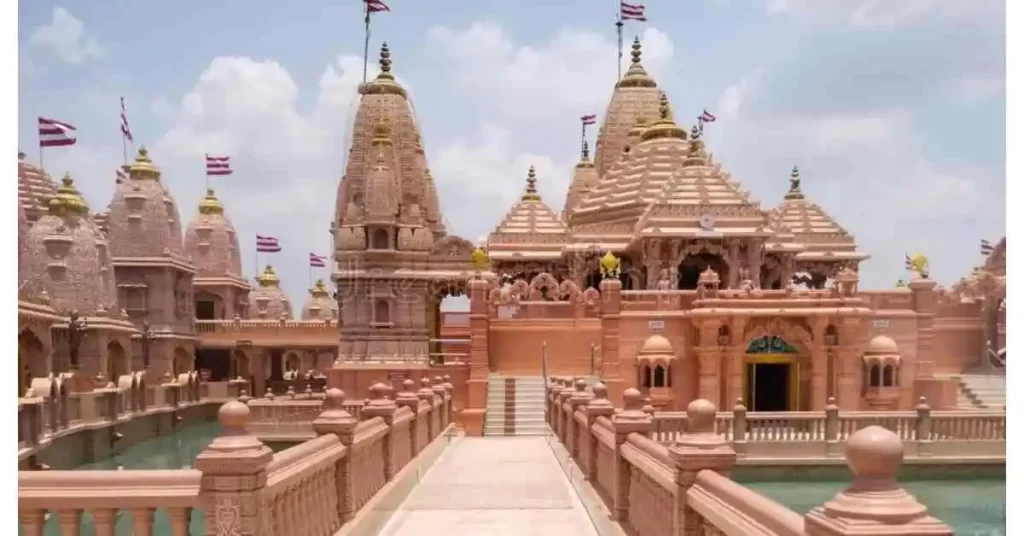Ayodhya’s Ram Mandir, a symbol of cultural and religious significance, stands at the heart of Ayodhya, Uttar Pradesh, on the sacred grounds of Ram Janmabhoomi. The temple, holds a special place in the hearts of millions, embodying the reverence for Lord Rama, believed to be born at this site. The temple boasts a length of 380 feet, a width of 250 feet, and a height of 161 feet, showcasing its grandeur.
Let’s delve into the 20 interesting and lesser-known facts about this sacred abode:
- Largest Temple in India: Ayodhya Ram Mandir is designed to be the largest temple in India, showcasing grandeur and spiritual significance.
- Traditional Nagar Architectural Style: The temple follows the traditional Nagar architectural style, reflecting Hindu temple architecture’s essence.
- Surrounded by Temples: Ayodhya Ram Mandir is surrounded by four other temples, creating a divine precinct that enhances the spiritual ambiance.

- Foundation with Holy Soil: The temple’s foundation is crafted with holy soil from 2587 regions, symbolizing a sacred connection.
- No Use of Iron: Construction avoids iron usage, adhering to traditional principles and showcasing skilled craftsmanship.
- Historical Ram Janmabhoomi Site: Located at the Ram Janmabhoomi site, the temple holds historical and cultural significance.
- Intricate Architectural Design: The temple’s design incorporates intricate architectural elements, reflecting Indian artistry.

- Unity in Diversity: Artisans from various regions contribute to the construction, promoting unity in diversity.
- Prime Minister Modi’s Involvement: PM Narendra Modi actively participates in the temple’s development.
- Symbol of Global Peace: Ayodhya Ram Mandir aims to be a global symbol of peace, inviting people worldwide.
- Ayodhya’s Cultural Heritage: The temple preserves and promotes Ayodhya’s rich cultural heritage.
- Traditional Craftsmanship: Traditional craftsmanship techniques are employed in the temple’s construction.
- Vedic Wisdom: Ayodhya Ram Mandir represents Vedic wisdom, embodying spiritual heritage.
- Sacred Pilgrimage Site: It is destined to be a significant pilgrimage site for devotees.
- Global Architectural Marvel: The temple combines traditional and modern architectural elements.
- Birthplace of Lord Rama: Located at the Ram Janmabhoomi site, the temple holds historical and cultural significance as the birthplace of Lord Rama.
- Environmentally Friendly: Construction embraces eco-friendly practices for sustainable development.
- Open to All Faiths: The temple promotes inclusivity, welcoming people of all faiths.
- Artistic Wall Carvings: Detailed wall carvings depict scenes from Hindu mythology.
- Educational and Cultural Center: Ayodhya Ram Mandir aims to be an educational and cultural hub, imparting knowledge and fostering cultural exchange.
- Neeharika Rajbhar




